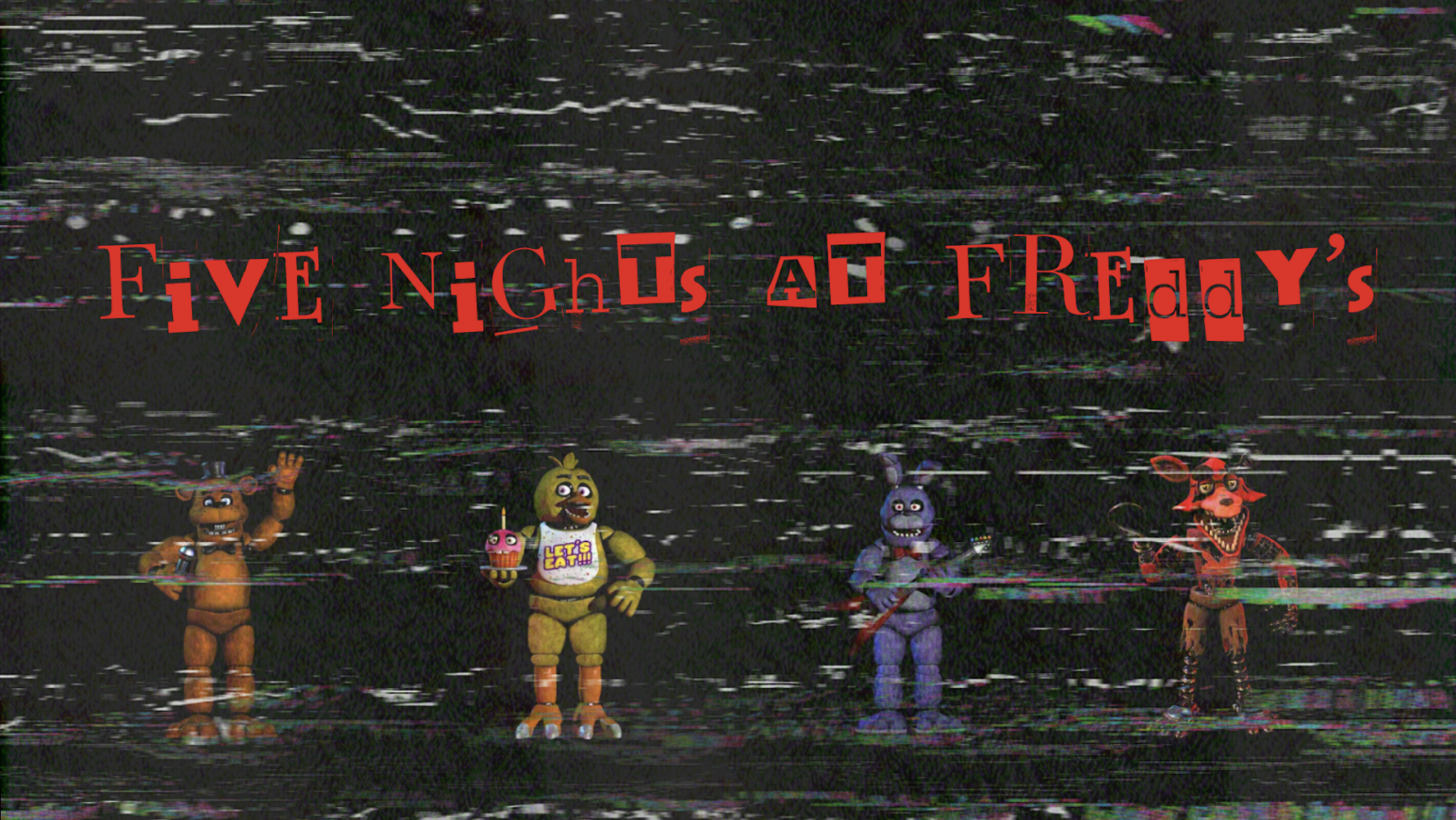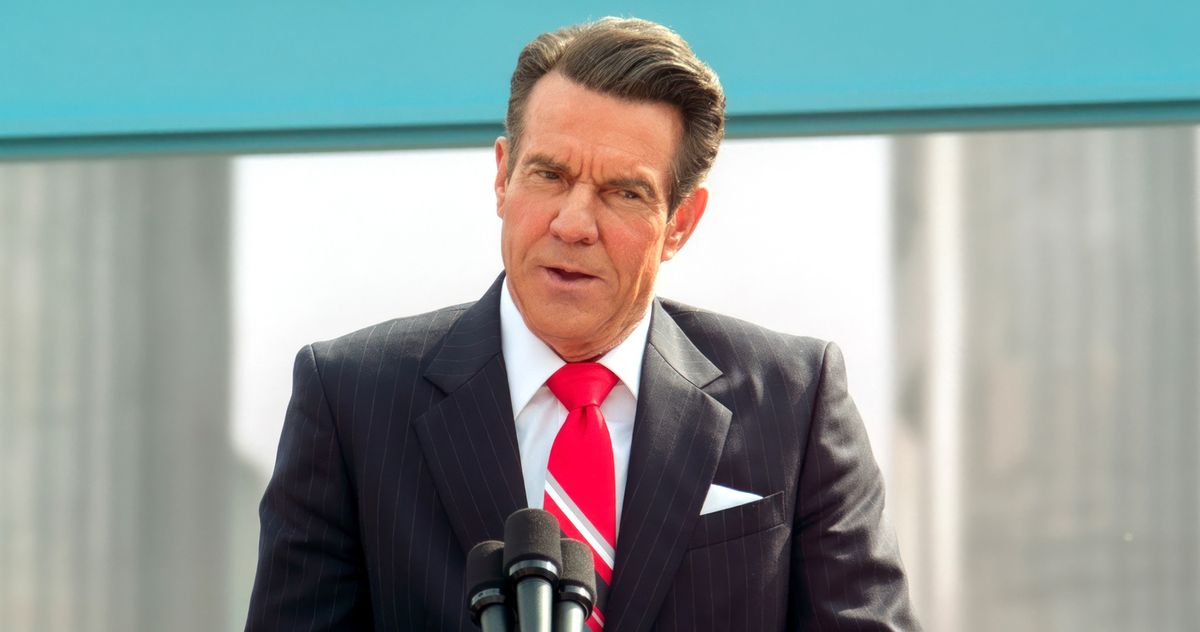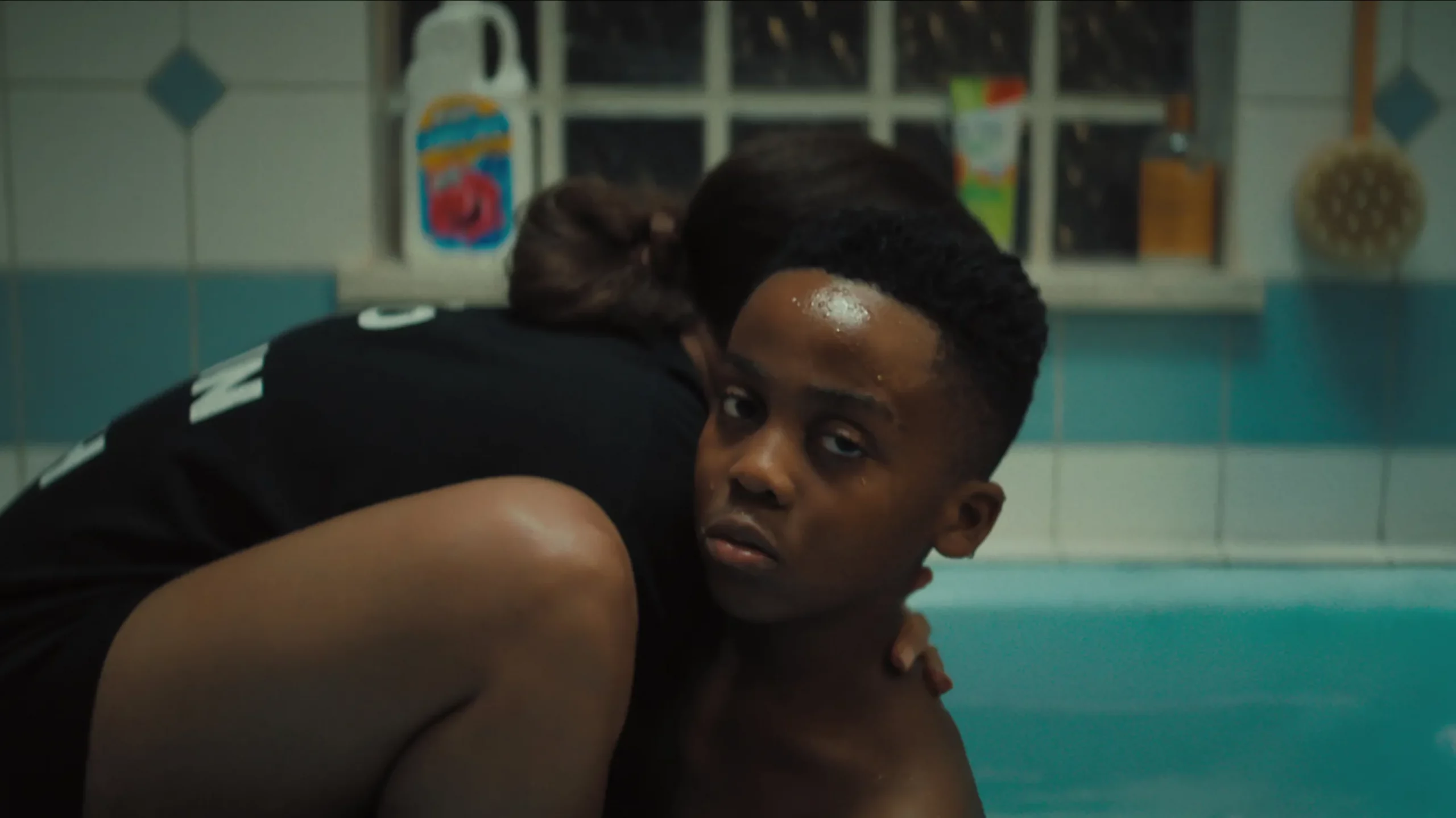Movie Reviews
Movie Review: “Five Nights at Freddy’s”

Join Staff Reporter Sophia Verma as she reviews the new horror film “Five Nights at Freddy’s,” released on Oct. 27.
Bringing the heart-pounding terror of classics like “Hush,” “The Black Phone” and “Insidious” to the big screen, Blumhouse Productions takes a stab at turning Scott Cawthon’s wildly popular “Five Nights at Freddy’s” video game franchise into an edge-of-your-seat horror film. This film is sure to delight and disturb fans who love horror and the franchise. With a track record of adapting frightening source material into blockbuster scare-fests, Blumhouse seems set up to transform the sinister, animatronic characters that have terrified players for years into equally chilling movie antagonists aiming to stalk their way to box office glory. As of Nov. 6, the movie has made over $217 million worldwide.
The main animatronics in this movie are Freddy Fazbear, Chica, Bonnie and Foxy. During the first three and a half minutes of the movie, I felt very tense and anxious. The movie opened with a security guard, Mike, beginning his first overnight shift at Freddy Fazbear’s Pizzeria, and he barricaded himself inside of the security office so that the animatronics couldn’t catch him. While watching this scene, I was lulled into a false sense of security since I thought the guard was going to be okay. Unfortunately, he was chased down by one of the animatronics and was strapped down to a chair. When he woke up, he was face-to-face with a nightmarish bear mask contraption that had glowing red eyes. The interior of the mask was filled with blades and it was moving quickly towards him. I was immediately hooked in and really liked how the film wasted no time bringing the horror, jumpscares and nerve-wracking chase experiences straight from the games to the big screen.
However, the first 34 minutes of the movie felt really slow to me and were not engaging. After the harrowing opening sequence, the film settled into a slower pace as it showed Mike looking for a job while also delving into the backstory of the five missing children tied to the pizzeria, whose souls inhabited the animatronics. There were also many scenes where Mike’s sister, Abby, followed him to his new job at the pizzeria and met the animatronics.
While these events were important for setting up the plot, this section of the film felt drawn out compared to the terror, fear and intenseness of the opening scene. I thought that it was a bit confusing and hard to follow since there were so many storylines happening at once. While watching these plotlines unfold, I found myself willing for the pace to be picked back up, eager to get back to the frights promised by the first vigorous moments. I think that the film could have benefitted from tightening up these slower parts to better maintain the fear factor, as the real action and interesting parts didn’t start until about 40 minutes into the film, which is when I started to get into it again.
After the slow parts were over, the rest of the movie really delivered on the horror and suspense aspect. The action picked back up after Mike started his night shift and the movie kept me on the edge of my seat with nonstop scares and shocking moments. I have to say, for a PG-13 rated horror movie, some of the jumpscares were a bit over the top. I think that an R rating would have made much more sense for this frightening film. For example, there were three jumpscares that were definitely uncomfortable to watch, even if they didn’t scare me.
Those who don’t wish to read about the descriptions of the jumpscares should skip the following paragraph. One of those three jumpscares was when Carl, a thief who trashed each room of the pizzeria, got attacked by Mr. Cupcake, Chica’s sidekick. Mr. Cupcake was hiding in an abandoned fridge and jumped onto Carl’s face after he opened the door, mangling him. Not even two minutes later, Hank, one of Carl’s friends and another thief, got killed by Bonnie in a storage closet. During this scene, there was a bloody handprint on the door and disturbing sounds of bones cracking. Four minutes later, Max, Abby’s babysitter, got chomped in half by Freddy, which reminded some fans of “The Bite of ‘87,” while others are calling it “The Bite of ’23.” Watching those three very graphic and violent back-to-back jumpscares made me wish the movie had toned the jumpscare aspect down a bit for the PG-13 rating.
Overall, I really enjoyed watching “Five Nights at Freddy’s” and would recommend it to horror fans looking for a scary good time. When it came to building suspense, once the pace picked back up after the slower middle parts, I could not stop watching and I loved the nonstop action once the horror ramped up. The film had chilling atmospheres as the animatronics chased the characters through the pizzeria in the dark and even followed some to their houses. While a few moments pushed the boundaries of the rating, a majority of the scenes were creative, fun and intriguing. So, if you love horror, jumpscares and animatronic terror, definitely check out “Five Nights at Freddy’s” for a thrilling flick, just be prepared for some gruesomeness. I’d give this movie an 8.5/10 overall because I liked the way that it was entertaining and provided an exhilarating horror experience.

Movie Reviews
Reagan Is Almost Fun-Bad But It’s Mostly Just Bad-Bad

Dennis Quaid in Reagan.
Photo: Showbiz Direct/Everett Collection
Reagan is pure hagiography, but it’s not even one of those convincing hagiographies that pummel you into submission with compelling scenes that reinforce their subject’s greatness. Sean McNamara’s film has slick surfaces, but it’s so shallow and one-note that it actually does Ronald Reagan a disservice. The picture attempts to take in the full arc of the President’s life, following him from childhood right through to his 1994 announcement at the age of 83 that he’d been diagnosed with Alzheimer’s Disease. But you’d never guess that this man was at all complex, complicated, conflicted — in other words, human. He might as well be one of those animatronic robots at Disney World, mouthing lines from his famous speeches.
Dennis Quaid, a very good actor who can usually work hints of sadness into his manic machismo, is hamstrung here by the need to impersonate. He gets the voice down well (and he certainly says “Well” a lot) and he tries to do what he can with Reagan’s occasional political or career setbacks, but gone is that unpredictable glint in the actor’s eye. This Reagan doesn’t seem to have much of an interior life. Everything he thinks or feels, he says — which is maybe an admirable trait in a politician, but makes for boring art.
The film’s arc is wide and its focus is narrow. Reagan is mainly about its subject’s lifelong opposition to Communism, carrying him through his battles against labor organizers as president of the Screen Actors Guild and eventually to higher public office. The movie is narrated by a retired Soviet intelligence official (Jon Voight) in the present day, answering a younger counterpart’s questions about how the Russian empire was destroyed. He calls Reagan “the Crusader” and the moniker is meant to be both combative and respectful: He admires Reagan’s single-minded dedication to fighting the Soviets. They, after all, were single-minded in their dedication to fighting the U.S., and the agent has a ton of folders and films proving that the KGB had been watching Reagan for a long, long time.
By the way, you did read that correctly. Jon Voight plays a KGB officer in this picture, complete with a super-thick Russian accent. There’s a lot of dress-up going on — it’s like Basquiat for Republicans, even though the cast is certainly not all Republicans — and there’s some campy fun to be had here. Much has been made of Creed’s Scott Stapp doing a very flamboyant Frank Sinatra, though I regret to announce that he’s only onscreen for a few seconds. Robert Davi gets more screentime as Leonid Brezhnev, as does Kevin Dillon as Jack Warner. Xander Berkeley puts in fine work as George Schultz, and a game Mena Suvari shows up as an intriguingly pissy Jane Wyman, Reagan’s first wife. As Margaret Thatcher, Lesley-Anne Down gets to utter an orgasmic “Well done, cowboy!” when she sees Reagan’s “Mr. Gorbachev, tear down this wall” speech on TV. And my ’80s-kid brain is still processing C. Thomas Howell being cast as Caspar Weinberger.
To be fair, a lot of historians give Reagan credit for helping bring about both the Gorbachev revolution and the eventual downfall of the U.S.S.R. and its satellites, so the film’s focus is not in and of itself a misguided one. There are stories to be told within that scope — interesting ones, controversial ones, the kind that could get audiences talking and arguing, and even ones that could help breathe life into the moribund state of conservative filmmaking. But without any lifelike characters, it’s hard to find oneself caring, and thus, Reagan’s dedication to such narrow themes proves limiting. We get little mention of his family life (aside from his non-stop devotion to Nancy, played by Penelope Ann Miller, and vice versa). Other issues of the day are breezed through with a couple of quick montages. All of this could have given some texture to the story and lent dimensionality to such an enormously consequential figure. But then again, if the only character flaw you could find in Ronald Reagan was that he was too honest, then maybe you weren’t very serious about depicting him as a human being to begin with.
See All
Movie Reviews
‘Don’t Let’s Go to the Dogs Tonight’ Review: An Extraordinary Adaptation Takes a Child’s-Eye View of an African Civil War

Alexandra Fuller‘s bestselling 2001 memoir of growing up in Africa is so cinematic, full of personal drama and political upheaval against a vivid landscape, that it’s a wonder it hasn’t been turned into a film before. But it was worth waiting for Embeth Davidtz’s eloquent adaptation, which depicts a child’s-eye view of the civil war that created the country of Zimbabwe, formerly Rhodesia — a change the girl’s white colonial parents fiercely resisted.
Davidtz, known as an actress (Schindler’s List, among many others), directs and wrote the screenplay for Don’t Let’s Go to the Dogs Tonight and stars as Fuller’s sad, alcoholic mother. Or, actually, co-stars, because the entire movie rests on the tiny shoulders and remarkably lifelike performance of Lexi Venter — just 7 when the picture, her first, was shot. It is a bold risk to put so much weight on a child’s work, but like so many of Davidtz’s choices here, it also turns out to be shrewd.
Don’t Let’s Go to the Dogs Tonight
The Bottom Line Near perfection.
Venue: Telluride Film Festival
Cast: Lexi Venter, Embeth Davidtz, Zikhona Bali, Fumani N Shilubana, Rob Van Vuuren, Anina Hope Reed
Director-screenwriter: Embeth Davidtz
1 hour 38 minutes
Another those smart calls is to focus intensely on one period of Fuller’s childhood. Don’t Let’s Go to the Dogs Tonight is set in 1980, just before and during the election that would bring the country’s Black majority to power. Bobo, as Fuller was called, is a raggedy kid with a perpetually dirty face and uncombed hair, who’s seen at times riding a motorbike or sneaking cigarettes. She runs around the family farm, whose run-down look and dusty ground tell of a hardscrabble existence. The film was shot in South Africa, and Willie Nel’s cinematography, with glaring bright light, suggests the scorching feel of the sun.
Much of the story is told in Bobo’s voiceover, in Venter’s completely natural delivery, and in another daring and effective choice, all of it is told from her point of view. Davidtz’s screenplay deftly lets us hear and see the racism that surrounds the child, and the ideas that she has innocently taken in from her parents. And we recognize the emotional cost of the war, even when Bobo doesn’t. She often mentions terrorists, saying she is afraid to go into the bathroom alone at night in case there’s one waiting for her “with a knife or a gun or a spear.” She keeps an eye out for them while riding into town in the family car with an armed convoy. “Africans turned into terrorists and that’s how the war started,” she explains, parroting what she has heard.
At one point, the convoy glides past an affluent white neighborhood. That glimpse helps Davidtz situate the Fullers, putting their assumptions of privilege into context. Bobo has absorbed those notions without quite losing her innocence. Referring to the family’s servants, her voiceover says that Sarah (Zikhona Bali) and Jacob (Fumani N. Shilubana) live on the farm, and that “Africans don’t have last names.” Bobo adores Sarah and the stories she tells from her own culture, but Bobo also feels that she can boss Sarah around.
Venter is astonishing throughout. In close-up, she looks wide-eyed and aghast when visiting her grandfather, who has apparently had a stroke. At another point, she says of her mother, “Mum says she’d trade all of us for a horse and her dogs.” When she says, after the briefest pause, “But I know that’s not true,” her tone is not one of defiant disbelief or childlike belief, as might have been expected. It’s more nuanced, with a hint of sadness that suggests a realization just beyond her young grasp. Davidtz surely had a lot to do with that, and her editor, Nicholas Contaras, has cut all Bobo’s scenes into a sharply perfect length. Nonetheless, Venter’s work here brings to mind Anna Paquin, who won an Oscar as a child for her thoroughly believable role as a girl also who sees more than she knows in The Piano.
The largely South African cast displays the same naturalism as Venter, creating a consistent tone. Rob Van Vuuren plays Bobo’s father, who is at times away fighting, and Anina Hope Reed is her older sister. Bali and Shilubana are especially impressive as Sarah and Jacob, their portrayals suggesting a resistance to white rule that the characters can’t always speak out loud.
Davidtz has a showier role as Nicola Fuller. (The movie doesn’t explain its title, which hails from the early 20th century writer A.P Herbert’s line, “Don’t let’s go the dogs tonight, for mother will be there.”) Once, Nicola shoots a snake in the kitchen and calmly wanders off, ordering Jacob to bring her tea. More often, Bobo watches her mother drift around the house or sit on the porch in an alcoholic fog. But when her voiceover tells us about the little sister who drowned, we fathom the grief behind Nicola’s depression. And wrong-headed though she is, we understand her fury and distress when the election results make her feel that she is about to lose the country she thinks of as home. Davidtz gives herself a scene at a neighborhood dance that goes on a bit too long, but it’s the rare sequence that does.
There is more of Fuller’s memoir that might be a source for other adaptations. It is hard to imagine any would be more beautifully realized than this.
Movie Reviews
Film Review: The Deliverance – SLUG Magazine

Film
The Deliverance
Director: Lee Daniels
Lee Daniels Entertainment, Tucker Tooley Entertainment and Turn Left Productions
Streaming on Netflix: 08.30
When I give a movie a weak review, more often than not it’s because, on some level, I feel that the director didn’t succeed at making the film they set out to make. When I given a scathing review, it’s usually because the movie they were trying to make was an awful idea from the beginning. And every so often, there’s a movie like The Deliverance that leaves me with no clue what the filmmaker was trying to achieve, yet no less certain that they failed at it.
Ebony Jackson (Andra Day, The United States vs. Billie Holiday) is a single mother struggling with a tough financial situation and far too frequently turning to alcohol to escape her problems. Ebony and her kids—Nate (Caleb McLaughlin, Stranger Things), Shante (Demi Singleton, King Richard) and Andre (Anthony B. Jenkins, Never Let Go)—hope to have a fresh start in Pittsburgh, with the help of her mother, Alberta (Glenn Close, Fatal Attraction, Hillbilly Elegy), a cancer patient undergoing treatment and newly-devout Christian who makes no secret of the fact that she disapproves of Ebony’s life choices. The tension between the two is palpable. Ebony is temperamental and frequently verbally abuses her children, even smacking them on occasion, and a social worker named Cynthia (Mo’Nique, Precious: Based On The Novel Push by Sapphire) is constantly looking over her shoulder, and not without reason. The children have unexplained bruises, Ebony is drunk at all hours of the day and she and her mother—who was abusive to Ebony as a child—are constantly fighting. The kids aren’t exactly having the time of their lives, as Nate faces bullying in the neighborhood, Shante pines for her absent father and young Andre finds solace in an imaginary friend named Trey. And just when it seems that things couldn’t get worse, in addition to their tendency to be covered in unexplained bruises, the kids all start to display frighteningly bizarre behaviorfirst at school, then at home—including speaking in tongues, climbing backwards up the walls, sobbing uncontrollably, and eating their own feces. It eventually becomes clear to Ebony that the kids are possessed, though, of course, no one believes her, so she brings in an expert, Reverend Bernice James (Aunjanue Ellis-Taylor, King Richard, Origin) to perform an exorcism. These demons aren’t going to go with out a fight (possession is nine tenths of the law, after all) and Ebony must battle the forces of evil for the very souls of her family.
The Deliverance is a disjointed mess, with much of the first half of the film being an involving family drama and shifting on a dime to become an insipid and exploitative inner city take on The Exorcist. Daniels was inspired by the Ammons haunting case of 2011, which also involved a mother using demonic possession to explain her kids frequent absences from school, as well as their bruises, and has been largely debunked. It’s very hard to get around the feeling that the film is in remarkably bad taste in regards to its treatment of child abuse, and it reaches a point where it becomes truly baffling. A message of avoiding a judgemental view of our neighbors and recognizing that we never know what a person is going through is certainly worthwhile. It’s at best questionable as to whether that should extend to giving the benefit of the doubt to an alcoholic parent who asserts, “I’m not hitting my kids, the Devil is!”. The movie is far too dark and disturbing in its depiction of real world problems to be fun in any way, yet when it moves into full on horror mode, it loses all credibility as fact-based drama, leaving the clear question: why does this movie exist? By the end of the film, Ebony’s choice to get back together with the kids’ father and “try to make things work” immediately had me wondering if I’d just watched a supernatural take on The Parent Trap.
Day gives an intense and riveting performance, making Ebony starkly human—even if she’s rarely likable—and she single-handedly gives the film redeeming value. Close is a legendary actress who is long overdue an Oscar, and as a big fan, it’s more than a bit frustrating to watch her reduced to seeing if she can get a Best Supporting Actress win out of playing a cancer patient on her deathbed who grows fangs when the demon takes hold and starts spouting obscenities and racial slurs. The combination of fangs and the baldness that comes with chemotherapy gives Close a vampiric appearance, and deliberately using the effects of cancer to make a character look more creepy is an odious ploy that needs to be called out. Daniels owes a lot of people an apology for this crass choice. Ellis-Taylor is effective as the wise Reverend, and in a different film it could be an effective performance, but her arrival here simply signals that the movie is going completely off the rails. The young actors who play the kids give impressive performances, but they all deserve a far better vehicle.
The Deliverance is the kind of movie that keeps your attention to the end, then leaves you feeling used and angry when it’s over. There’s no denying that there’s a certain degree of skill involved in the filmmaking, but it’s all put toward such an unworthy end that if anything, that just gave me more to hold against it. This isn’t the first time that a major Netflix original has left me wishing that it was getting a more substantial theatrical run, but it is the first time that my reasoning was the knowledge that it would largely be ignored in theaters, whereas it’s likely to hurt many an unsuspecting viewer on streaming. –Patrick Gibbs
Read more film reviews:
Film Review: Reagan
Film Review: You Gotta Believe
-

 Connecticut1 week ago
Connecticut1 week agoOxford church provides sanctuary during Sunday's damaging storm
-

 Technology1 week ago
Technology1 week agoBreakthrough robo-glove gives you superhuman grip
-

 Politics1 week ago
Politics1 week agoClinton lauds Biden as modern-day George Washington and president who 'healed our sick' in DNC speech
-

 Politics1 week ago
Politics1 week ago2024 showdown: What happens next in the Kamala Harris-Donald Trump face-off
-

 News1 week ago
News1 week agoWho Are Kamala Harris’s 1.5 Million New Donors?
-

 Politics1 week ago
Politics1 week agoTrump taunted over speculated RFK Jr endorsement: 'Weird as hell'
-

 Politics1 week ago
Politics1 week agoVivek Ramaswamy sounds off on potential RFK Jr. role in a Trump administration
-

 World6 days ago
World6 days agoPortugal coast hit by 5.3 magnitude earthquake













